15/08/2021
Posted by: TPMS Bypass
When your tire is underinflated, an icon, horseshoe-like with an exclamation point, illuminates on the gauge cluster of your car’s dashboard. The technology responsible for giving out this alert is the tire pressure monitoring system (TPMS).
The TPMS gets information regarding their air pressure level from sensors. Depending on the type of TPMS installed in your car, the system may be relying on air pressure sensors inside your tires or the anti-lock brake system wheel speed sensors.
Why Do People Opt to Disable Their Tire Sensors?Clearly, these sensors are critical for your TPMS to work. But why do some car owners choose to disable their tire sensors?
First, you have to understand that sensors need to be in tiptop condition and mounted properly as well as reset accordingly to avoid false underinflated or overinflated tire alerts.
Yes, you read that right! Your TPMS may warn you that one of your tires do not have the correct air pressure level even if there is no real issue. There are various reasons for this, but the problem has something to do with the sensors most of the time.
For example, the TPMS warning light turns on when a relearn is not done after replacing your flat tire. In this situation, the system is still getting signals from the replaced underinflated tire instead of the new one. This is why you get an alert that you have a flat tire.
False TPMS warning alerts rarely indicate a major issue with your vehicle – one that diminishes its roadworthiness and threatens your safety. However, dealing with them can be inconvenient, annoying and even expensive since you might need professional help to resolve the issue.
These false alerts can also be distracting as the warning light stays on until the issue is resolved. This can be dangerous since a distracted driver is more likely to get in a car collision.
Inconvenience, annoyance, additional expense and safety hazards – these are just some of the reasons why a handful of car owners are disabling their TPMS.
Disable Tire Sensors – What Does It Mean & Can It Be Done?When people ask about disabling their tire sensors, what they actually want to know is if there’s a fuse that can turn off the TPMS.
Currently, the tire pressure monitoring systems installed in vehicles do not have an on/off button. Similarly, cars do not have a built-in fuse to stop sensors from transmitting information to the electric control module (ECM).
Due to the absence of an on/off switch, some employ crude methods to disable their TPMS.
For example, some choose to remove one of the sensors or forego buying a replacement when it gets damaged. It should be noted, though, that these options do not turn off the TPMS. In fact, doing these things is going to cause the warning light to stay on.
Others resort to putting black tape on the icon to resolve the issue of having an illuminated TPMS warning light. This way, they no longer see it and get distracted.
You are going to find other proposed methods of disabling the TPMS. But unlike the one mentioned above, these methods would require you to tinker with your car’s wirings or ECM. Apart from being complicated, these options can be risky because they can compromise the roadworthiness of your vehicle.
Simple and Easy Way to Disable Your Tire SensorsNow, is there a better way of turning off your TPMS?
Yes, there is a sophisticated yet non-invasive method of disabling your tire pressure monitoring system. All you have to do is use an emulator designed to bypass the TPMS.
The TPMS bypass emulator is a small box-like device equipped with technology to “turn off” your tire pressure monitoring system. Once it is activated, you don’t have to worry about the TPMS warning light turning on. Even if you have a damaged sensor or forget to relearn after changing tires, the warning icon is no longer going to light up.
Even if you have a damaged sensor or forget to relearn after changing tires, the warning icon is no longer going to light up.
With this device, it is as if you have a TPMS on/off button. Activate it and keep it in your car to disable the TPMS. Deactivate the device if you want to enable the system and get alerts about your tire’s pressure level.
It is also worth mentioning that the device won’t require you to manipulate any wires in your car or modify the ECM. So, you don’t have to worry about making alterations that can interfere with the safety and performance of your vehicle.
In summary, you can disable your tire sensors or TPMS. There are different ways to do this, but it is best to choose a non-invasive and failproof method – using a TPMS bypass emulator. However, if you decide to disable your TPMS, make sure that you stay vigilant when it comes to the condition of your tires and regularly check their pressure level.
Want to disable your tire sensors or TPMS? Do it safely and successfully using our bypass emulator! Visit our website to view our products!
Hide Show
Sell/Trade Us Your Car | Click Here To Learn More
Your tire pressure light provides a critical reminder to restore the pressure in your vehicle's tires when it gets low. You should only attempt to reset the light after first addressing the tire pressure in every tire. Once your tires are at the appropriate pressure, the light may go off on its own. If it doesn't go off right away, driving at 50 mph for about 10 minutes should help the tire pressure sensor reset.
You should only attempt to reset the light after first addressing the tire pressure in every tire. Once your tires are at the appropriate pressure, the light may go off on its own. If it doesn't go off right away, driving at 50 mph for about 10 minutes should help the tire pressure sensor reset.
If the tire pressure light is still on, there are a few more tricks you can try:

TPMS stands for Tire Pressure Monitoring System. The tire pressure light is one component of this electronic system, providing a visual alert when your tire pressure is low. The TPMS monitors tire pressure using either an indirect or direct method.
An indirect TPMS measures the rate of revolution for each wheel. If a wheel starts spinning faster than anticipated, the system signals to your vehicle's computer that something is amiss with the tire rotation, and your tire pressure light comes on. You must manually reset the monitor in an indirect TPMS system.
A direct TPMS uses pressure monitoring sensors in each tire to monitor tire pressure exactly. This is a more accurate alternative to an indirect TPMS system. The batteries inside these sensors will last for about 10 years.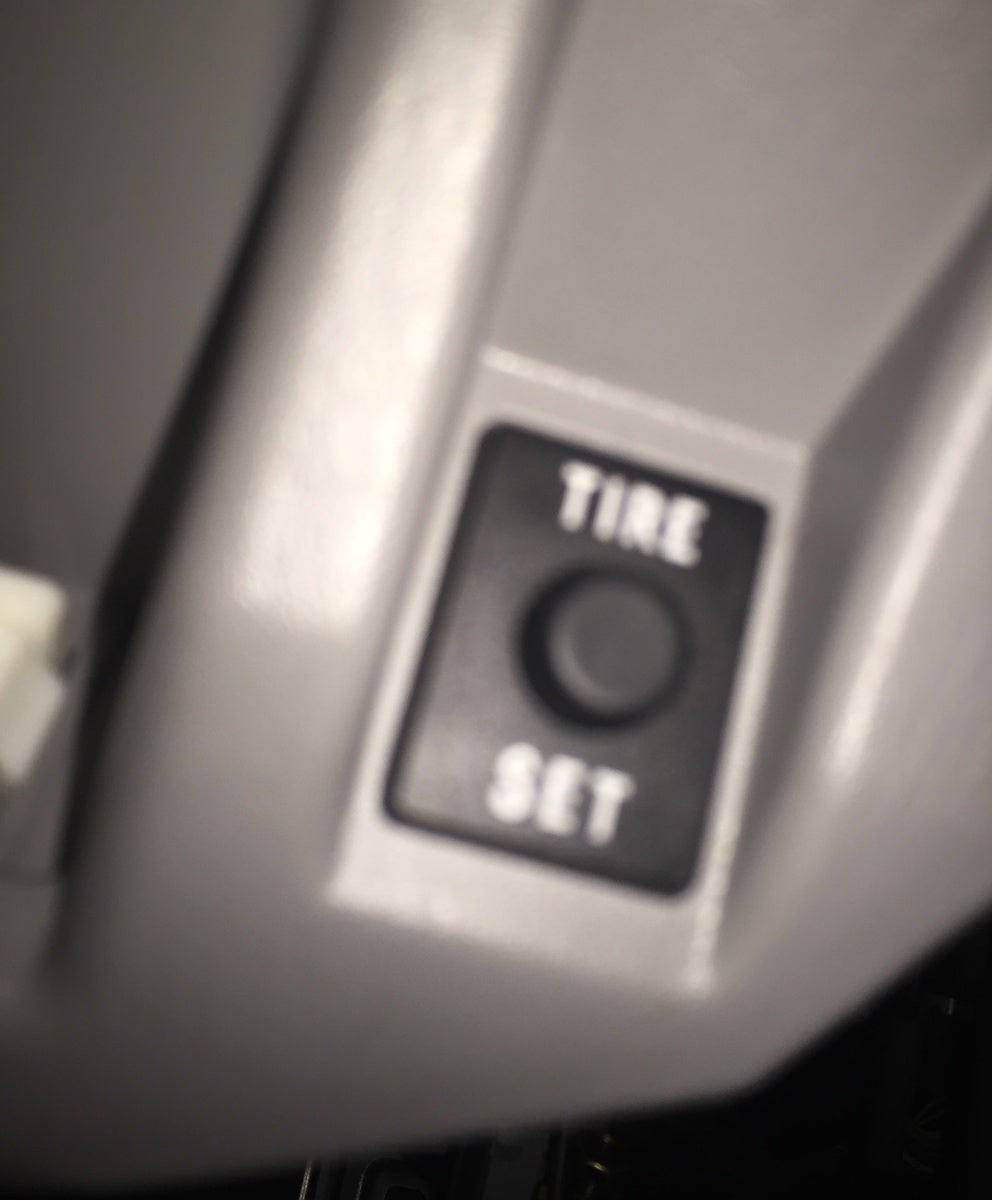 Direct TPMS systems reset automatically after tire inflation or rotation. You do need to have these sensors resynchronized when you get new tires, which requires a special tool.
Direct TPMS systems reset automatically after tire inflation or rotation. You do need to have these sensors resynchronized when you get new tires, which requires a special tool.
Yes, cold weather will affect the air pressure in your tires. Your tires lose one or two pounds per square inch (PSI) for every 10 degrees that the temperature drops. Cold air condenses while warm air expands. Therefore, the colder air in your tires will take up less space in lower temperatures.
You may find that your TPMS light is only illuminated for a short time in the morning on particularly cold days. After about 20 minutes of driving, the air will often warm up and expand, restoring proper pressure in your tires. If the light stays on after 20 minutes on the road, you should add air to your tires as needed to restore the proper pressure. Low tire pressure is hazardous for your vehicle regardless of the cause.
When the tire pressure monitor light is on, the first thing you should do is check the pressure in each of your tires, including the spare. Check the manufacturer's recommendation to determine the appropriate pressure for each tire. This is typically between 30 and 35 PSI but may vary. You should measure tire pressure when the tires are cold, which means they have not been driven in the last three hours.
Check the manufacturer's recommendation to determine the appropriate pressure for each tire. This is typically between 30 and 35 PSI but may vary. You should measure tire pressure when the tires are cold, which means they have not been driven in the last three hours.
To check the pressure, simply unscrew the valve cap and insert a tire gauge into the valve stem. The gauge will provide a clear reading. Replace the valve cap when you're finished. If your tires are all at the appropriate pressure, there's a malfunction with your TPMS. Bring your vehicle to an authorized dealership service center to diagnose and resolve the issue.
If the tire pressure monitor light is on, you should check your tire pressure as soon as possible. Low tire pressure creates a serious hazard on the road. According to the National Highway Traffic Safety Administration, 738 people died in tire-related crashes in 2017. When tire pressure is low, the tire has more contact with the road. This may cause the tire to overheat, leading to tread separation, excessive tire wear, or a blowout.
This may cause the tire to overheat, leading to tread separation, excessive tire wear, or a blowout.
Low tire pressure also wreaks havoc on your fuel efficiency. You can save up to 11 cents per gallon simply by keeping your tires properly inflated. You'll also save money on tire replacements with adequate inflation. Keeping your tires properly inflated can add 4,700 miles to the tire's average lifespan.
The tire pressure monitor light gives you valuable information and should not be ignored.
You do not necessarily need to have your TPMS sensors replaced with new tires, but this is a good time to check them and make sure they're still in good condition. If you have an indirect TPMS system, your mechanic will need to manually reset the sensors after changing your tires. If you have a direct TPMS system, no additional maintenance is required to reset the system.
A new TPMS system will typically last for about 10 years before the batteries run out.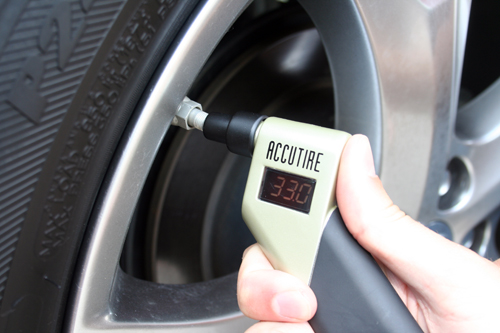 If you have an older vehicle, you may need new sensors every five or six years. Your mechanic can advise you on the best time to replace TPMS sensors for your vehicle. When new sensors are installed, the system must relearn the location of each tire, which requires a detailed series of technical procedures. You should leave this task to a professional.
If you have an older vehicle, you may need new sensors every five or six years. Your mechanic can advise you on the best time to replace TPMS sensors for your vehicle. When new sensors are installed, the system must relearn the location of each tire, which requires a detailed series of technical procedures. You should leave this task to a professional.
If you need tire service for your Toyota, come to Kings Toyota for prompt, reliable service. Our highly-trained technicians are equipped to assist with any type of tire issue, whether you need new tires or have a malfunctioning tire pressure sensor light. Make your appointment today.
First Name*
Last Name*
Contact Me by*
EmailPhone
The TPMS system is designed to constantly monitor the degree of inflation of tires.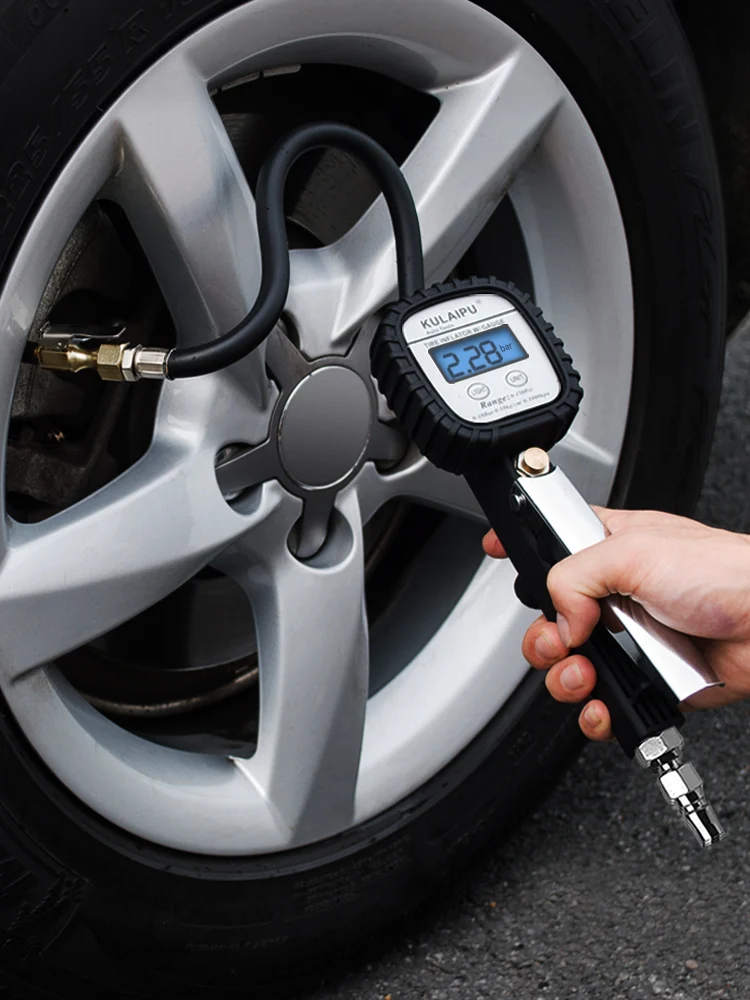 Due to frequent errors or malfunctions, some drivers want to disable tire pressure sensors to avoid constant maintenance and problems.
Due to frequent errors or malfunctions, some drivers want to disable tire pressure sensors to avoid constant maintenance and problems.
Contents
To understand how and why this is done, you should understand the design of the device and the principle of its operation. The skate inflation control system contains several interconnected blocks:
Principle of operation - pressure sensors monitor the degree of tire inflation in real time. When the boost drops below a predetermined level, the controller is triggered, the signal is sent to the block, where it is processed into pulses that are understandable for indication. Information is displayed on the dashboard.
Information is displayed on the dashboard.
The control system displays a malfunction on the panel by means of a special light bulb. The module signals to the driver that the pressure in one or more tires has dropped below the required level. This may indicate the presence of a puncture or severe damage to the tire.
The design and operation of the sensors are primitive. To perform diagnostics of the part, it is enough to execute:
If the TPMS module icon does not go out, you will need to disassemble the wheels and examine the status of the sensors in detail. The sensor is removed from the seat and inspected. If there are no visual violations, and the element refuses to work normally, it is recommended to change the battery in the device case.
Note! On some types of sensors, the power supply cannot be replaced. Such sensors are replaced immediately.
Calibration is not required for most element types. Devices from the factory are produced completely ready for operation. To activate them, you need to install them in the wheel and the system independently reads new sensors.
In some modifications, you will need to make pairings in manual mode. Each sensor has a serial number. It is driven into the corresponding menu field of the on-board computer, after which it is installed in the tire.
There may be several reasons.
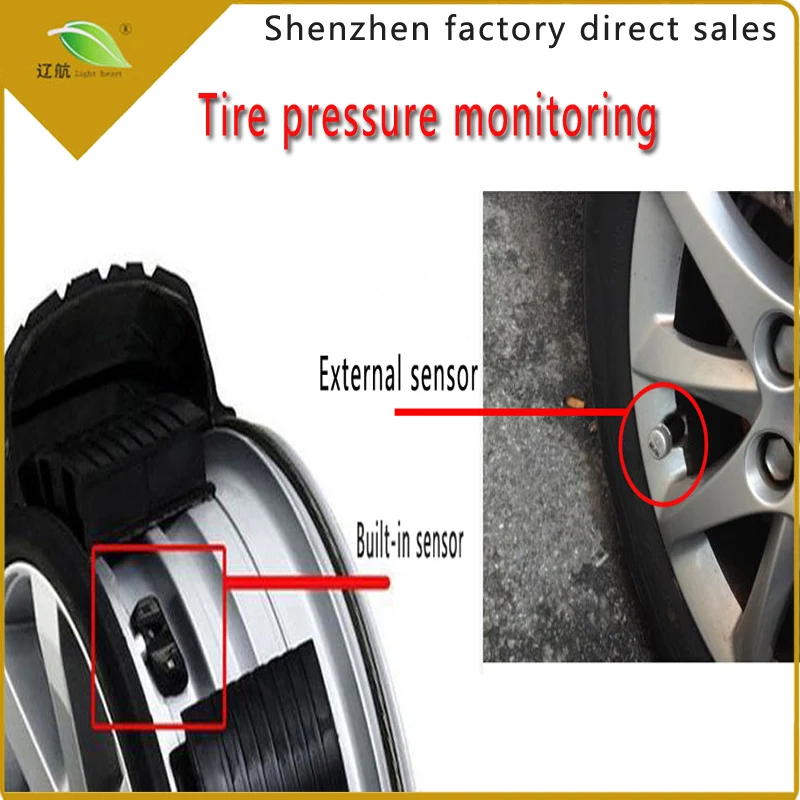
The pressure sensor cannot be disabled by standard methods. There is no such option in the on-board computer. A flashing and “cutting out” of a part of the program code is in progress.
Some BCs have this feature. To deactivate - you need to press the desired button.
When a flat tire is detected, the sensors will signal a loss of pressure. In some vehicles such as Toyota, the sensors are turned off forcibly. Practiced on off-road vehicles, where the tires are bled to make it easier to overcome obstacles.
The fault code is cleared automatically. To remove the indication, you will need to pump up the wheels to a predetermined level and drive the car for about 10 kilometers.
On some versions of the car, in order to reset the counter, you need to enter the settings menu on the dashboard.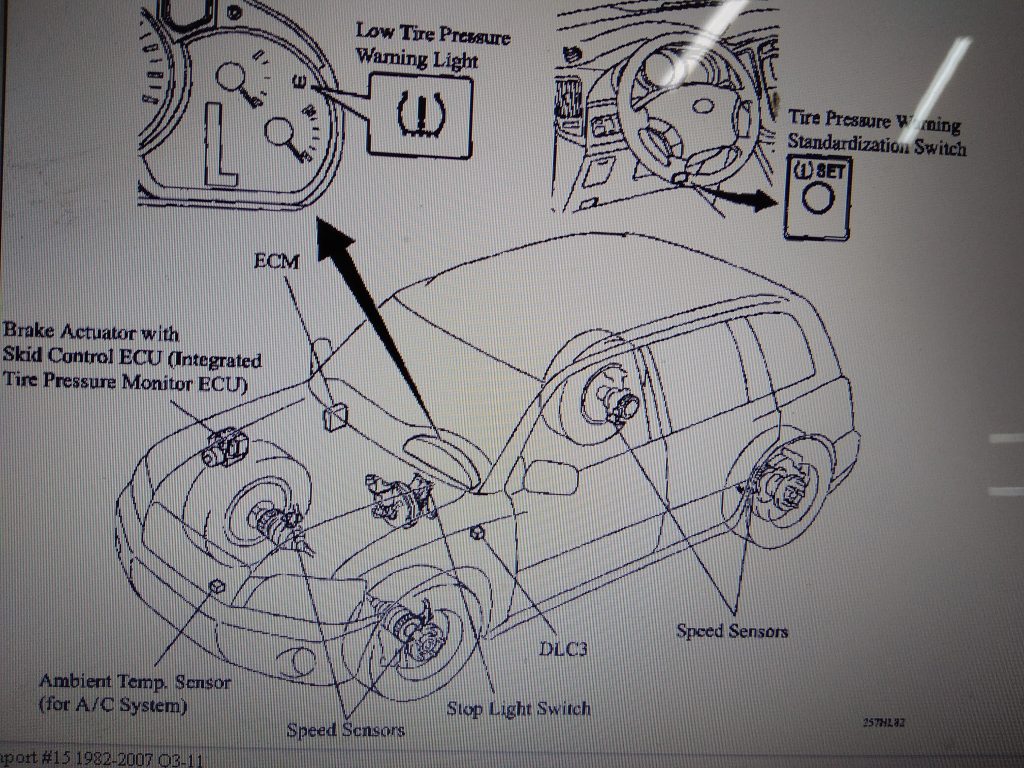 Then proceed according to the instructions.
Then proceed according to the instructions.
To use the button correctly, first read the manufacturer's instructions. The button is located on the dashboard or near the steering rack.
If the indicator lamp appears and does not go out, there are two reasons.
It is possible for the indication to appear when the driver has put on the spare tire. Some machines have 5 sensors. If one of them is outside the vehicle, the system will consider it as a breakdown.
Causes:
 It is enough to raise the pumping to the required indicator.
It is enough to raise the pumping to the required indicator. On many vehicles, the option to force the sensors to turn off is not provided and is performed only by changing the software.
Leave a review
TPMS or Tire Pressure Monitoring System is a set of equipment commonly found in modern vehicles. Its main job is to alert you if there are problems with tire pressure. For example, one tire has lost pressure - in this case it is not safe to drive, but the system will inform you about this, and you can inflate the wheel to avoid steering problems.
But sometimes the system does not work correctly. Some sensors may fail or the system needs to be rebooted. In this case, you may see a blinking or simply lit tire pressure error indicator on the dashboard. Resetting the pressure monitoring system will help you solve the problem if the sensor is working.
Some sensors may fail or the system needs to be rebooted. In this case, you may see a blinking or simply lit tire pressure error indicator on the dashboard. Resetting the pressure monitoring system will help you solve the problem if the sensor is working.
Please note that different vehicles may have different TPMS reset methods, so you may need to try several of them before you know the most effective one.
Initially, you will just need to hold the tire pressure sensor reset button for a few seconds until the pressure indicator flashes three times and then goes out. But sometimes it doesn't help much. So we found other ways to calm down the pressure control system.
First, locate the TPMS reset button, which is usually located somewhere under the steering wheel. Start the car, press and hold the button for 3 seconds. Then drive at a speed of 80 km/h for approximately 10 minutes. Of course, you will need to find a suitable track for this.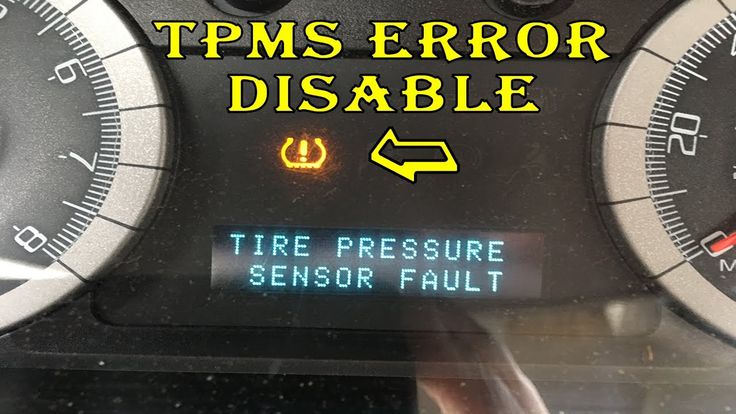 Steady driving is an important part of resetting tire pressure sensors this way. Of course, before this operation, you will need to inflate the tires to the required pressure.
Steady driving is an important part of resetting tire pressure sensors this way. Of course, before this operation, you will need to inflate the tires to the required pressure.
In some vehicles, you will need to drive on any road and at any speed for 20 minutes after resetting the sensors, as long as you do not turn off the engine.
So, start the car, press the reset button and hold it for three seconds. Do not turn off the engine until 20 minutes have passed. You can drive or just let the engine idle for 20 minutes. This method of resetting pressure sensors should work for most vehicles. Again, inflate the tires to the correct pressure before resetting the system.
If the simple methods don't work with your machine, try another method. Start the engine so that the tire pressure monitoring system can register the changes. Then inflate the tire 0.2 bar above the recommended level. After a minute, completely deflate the tire. Wait one more minute to reset the sensors. Then inflate the tire to the optimum pressure level and let the engine run for another minute. The indicator should stop flashing.
Wait one more minute to reset the sensors. Then inflate the tire to the optimum pressure level and let the engine run for another minute. The indicator should stop flashing.
The idea is to reset the entire engine electronics system by cutting off the power supply from the battery. First, make sure all tires are at the correct pressure. After that, turn off the engine, open the hood and disconnect both terminals from the battery. Wait 10-15 minutes. Reconnect the battery and turn on the ignition to check if the indicator lamp goes out.
If the above methods do not work with your vehicle, there is another option. Find a manual for your car or open a forum thread that talks about resetting tire pressure sensors in your car. Look for the combination of steps the manufacturer recommends to reset the TPMS system. Sometimes the combination can be quite strange and even complex.
If all methods fail and the error light continues to flash, the problem may be with the sensors. It is the blinking signal of the tire pressure lamp that often indicates a sensor malfunction. If there is a problem with tire pressure, usually the light will just come on and not blink.
It is the blinking signal of the tire pressure lamp that often indicates a sensor malfunction. If there is a problem with tire pressure, usually the light will just come on and not blink.
This means that if the light is flashing, one of the sensors may be faulty. Replacing the element is not so easy because it is under the tire. The tire must be removed from the rim to replace the sensor.
After replacement, you will still need to reset the pressure control system for the new sensor to work. Otherwise, the indicator will flash or light up.
Where is the reset button for the tire pressure sensors?
The button is often located directly below the steering wheel. But there may be different options. If you don't find the TPMS reset button there, look around the steering wheel - it should be somewhere in this area.
Difficult to say for all vehicles, but for most vehicles, the travel time before the tire pressure monitoring system resets should be at least 10-15 minutes. If you turn off the engine earlier than 10 minutes after pressing the reset button, the TPMS will still send some error signals the next time the engine is started.
If you turn off the engine earlier than 10 minutes after pressing the reset button, the TPMS will still send some error signals the next time the engine is started.
Drivers occasionally upgrade tires and wheels to larger ones and want their stock pressure control modules to work properly. The problem is that larger or flat-ride tires will have a different optimum pressure level, so the original gauges will always show an error on your dashboard.
One way to solve the problem is to buy other sensors tuned to the desired tire pressure level. Another way is to reset the control system in your car at the service station. Just check which option will be cheaper for you.
It's hard to say why manufacturers didn't add an option to automatically reset tire pressure sensors in cars. In most post-2015 vehicles, the TPMS is autonomous enough that it won't bother you much with reset requests.